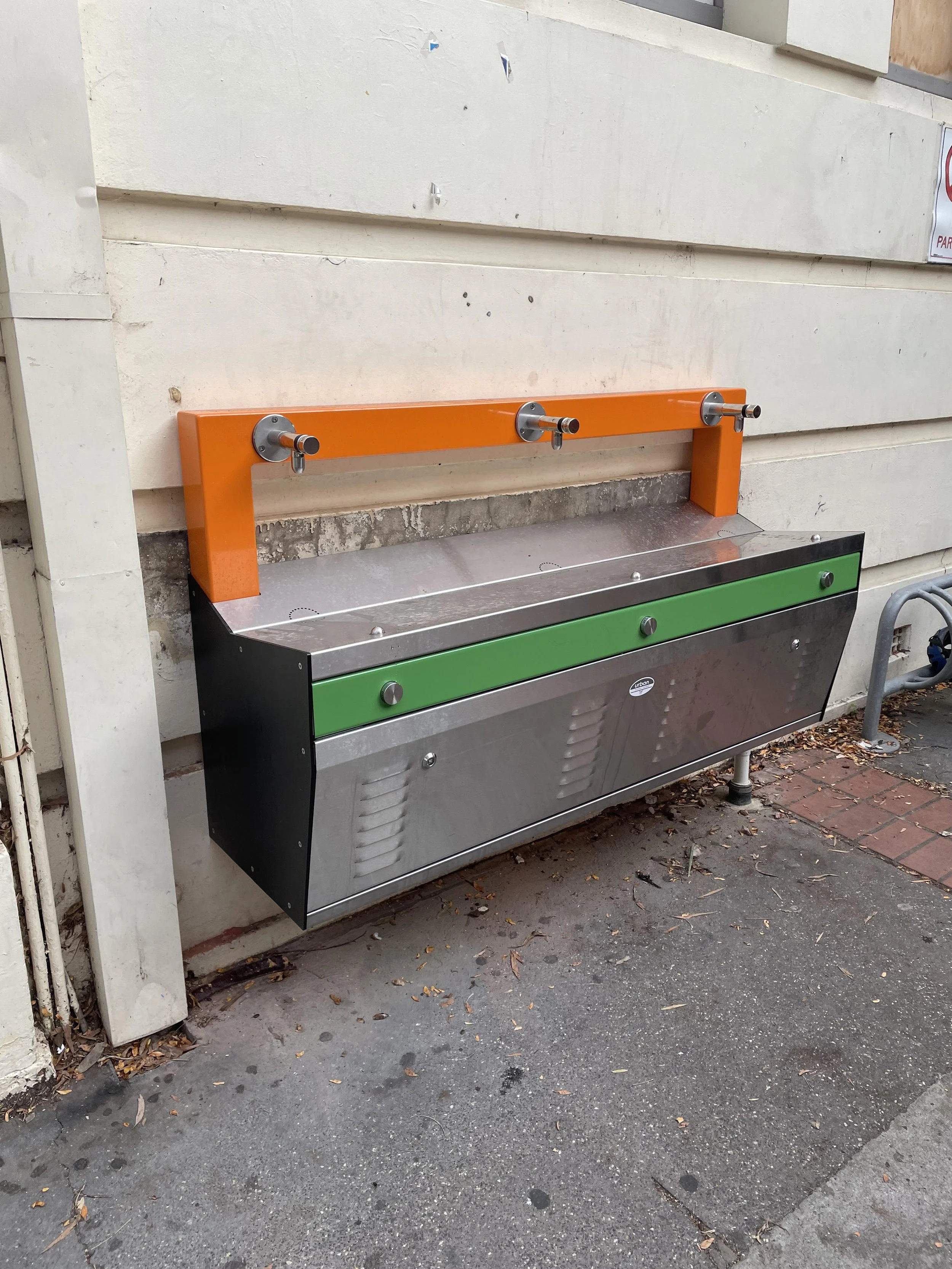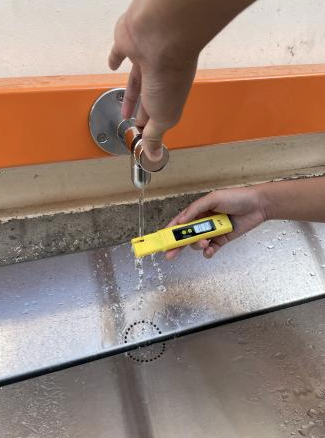Testing the waters: What resides within our drinking taps
BY Nhien Nguyen & Justin Nguyen
School has resumed from the term one holidays and students have been delighted with the arrival of new drinking fountains. However, following the instalments of UniHigh’s new school taps, rumour says that the water quality has been slightly changed for the worse.
The new tap design was introduced at the very beginning of term two. Offering major aesthetic upgrades accompanied by significant quality-of-life improvements. The new design has made students around the school surprised as it was a great refinement from the dull grey taps. The new look offers a minimal, yet functional design with its abstract shape. The drinking fountains sport the vivid green and orange colours apparent in the UniHigh logo. Furthermore, the taps weren’t just changed for their looks, but also provide many improvements relating to its utilisation. The new taps now feature a drinking fountain for your day-to-day use and a tap on a steel bar right above the drinking fountain for students who may want to fill up their water bottles. The new design has made it future-proof by making the drain not a hole but rather a straight line, making it less likely to get clogged.
As a result of the new drinking fountains, some students have reported that the water tastes peculiar or that their ‘stomach tingles’ coincidentally after they drank from the new taps. These comments are likely placebo or claims to seek attention, however, some avid UniHigh students speculate that the ‘funny-tasting’ water may be a result of the changed filtration system when the new taps replaced the preceding ones.
To support or deny these adamant allegations, the Ubique team has started investigations on the water of the new drinking fountains. A potential cause for the supposed stomach problems reported by students could be attributed to the pH levels of the drinking water.
The stomach is delicate and requires a set acidity of 1-3 to function adequately. If the pH levels in the stomach are not met, problems may arise. The recommended pH level for drinking water is 6.5 - 8.5 and drinking excessive amounts of water with pH levels outside of these levels can disrupt the stomach’s acidity which may result in acid reflux, stomach pain and/or digestion impairment.
The Ubique team took samples of the school’s drinking water from the school fountains and the filtered water from the EBS taps and measured its pH levels with a precise pH meter. The goal is to see if the pH levels of the water are safe to drink.
While measuring the water from the new drinking fountains, the pH levels fluctuated between 8.10 - 8.30 with it averaging an 8.22 pH level. The filtered water from the EBS achieved a pH level of approximately 7.45. Ideally, you’d like your water to have a pH close to 7.00, however, 6.5 - 8.5 are considered the safety parameters for drinkable water.
The pH levels at the EBS levels fluctuated between 7.2-7.75, however, settled at the exact pH of 7.45
Although the water at the new school taps are nothing gourmet, it is in fact safe to drink. However, it should be addressed that the filtered taps at the EBS taps produced a much purer pH compared to the ones at the regular drinking fountains. These filtered taps are found across the teachers’ lounge and the EBS kitchenette. This poses the question; how come teachers and EBS students get the clean, purer water while mainstream students are left with drinking water that barely scrapes by on what is considered ‘safe to drink’?






